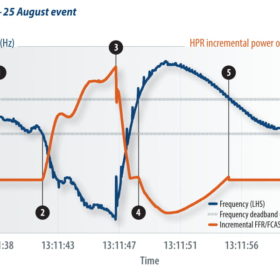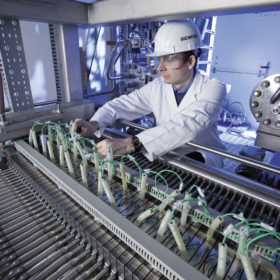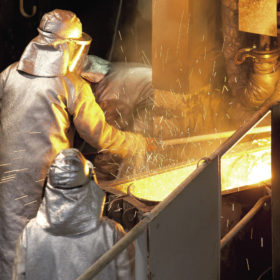A responsible compromise?
Toxicologists are struggling to follow the pace at which perovskite solar cells race from laboratory test benches to factory production lines. While researchers continue to assess the health and safety risks stemming from the lead used at the core of these new materials, the startups commercializing them argue that established encapsulation techniques and sound recycling schemes are enough to safety-proof their potentially disruptive technology and offset broader environmental threats.
Why are we not making the most out of big data analysis?
Although the solar industry still sees itself as young and fancy, its assets are aging. Asset owners still seem to struggle with the complexity of making the best use of big data analysis to improve efficiency and profitability of their plants. Ragna Schmidt-Haupt of Everoze examines why this has not changed much, and what can or should be improved. Artificial intelligence, advanced data analytics, automated assessments, and smart monitoring software: Holistic solar asset management starts here.
A new frontier in energy
Hornsdale Power Reserve, owned and operated by Neoen, and supplied by Tesla, is the world’s largest lithium-ion battery energy storage system, with a discharge capacity of 100 MW and energy storage capacity of 129 MWh. Located near Jamestown, South Australia, it shares the same 275 kV network connection point as the 300 MW Hornsdale wind farm. It was built, writes Paul Gleeson of Aurecon, to stabilize the state’s electricity grid, to facilitate the integration of renewable energy, and help prevent load-shedding (i.e. blackout events).
Flexible CIGS rolls out on new tools
PV production equipment suppliers across Europe and the United States are racing to provide Chinese manufacturers with tools to process gigawatts of thin film modules. CIGS manufacturing, which has struggled to flourish in crystalline silicon’s shadow, is trending towards flexible, lightweight products.
The what and when of P2G
Often touted as the missing link in the energy transition, power-to-gas (P2G) has not yet had its time to shine. While the technology has been around for decades, large-scale projects have been exceptionally rare. Over the last year, however, encouraging signals are emerging as research, pilot projects, and small-scale applications appear to have picked up pace. As debate continues about the tipping point for P2G in terms of conversion efficiency and costs, some market players are optimistic about near-term prospects.
Sky’s the limit
Operational assets are aging, with many having not more than five years left to operate within the original setup of 20 years. A wide variety of options are emerging for repowering, and some younger projects are underperforming so badly that they require a strategic rethink long before the original life ends. Everoze’s Ragna Schmidt-Haupt looks at just how realistic extended lifetime assumptions are, and what justifications are needed to underpin a repowering or retrofit business case.
The glue that binds HJT
The push towards higher-efficiency technologies drives innovation right across the supply chain. Long proven in the electronics industry, an electrically conductive adhesive (ECA) is now being deployed in heterojunction production, facilitated by new equipment.
Battery recycling is possible
A gloomy atmosphere currently hangs over the lithium-ion supply chain. Stationary battery storage equipment and electromobility offer tremendous opportunities. Yet many experts have concerns about the raw material supply and recycling situation. Christian Hagelüken, the Director of EU government affairs at Umicore, a major recycler and supplier of cobalt, explains his view of the situation.
Avoid premature weathering of buried string cables
Faults in underground cabling due to moisture ingress and weathering have been identified as the culprit in many cases of underperforming solar plants, even when the materials used were specified as suitable for underground installation. The topic of cables struck a nerve during this year’s pv magazine Quality Roundtable at The smarter E Europe event, and the right way to lay buried string cables is still an open question.
Size matters
The latest development on the module front sees manufacturers adopting larger wafer sizes in order to reach the industry’s raised expectations for power output. Older “M2” wafers have been the standard in recent years but now appear to be on the way out. Several theories about optimal size are gaining ground, but the future direction of the standard is still far from clear.










